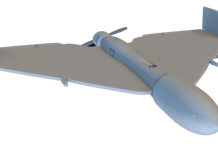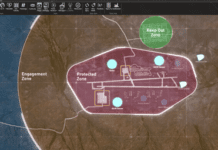This post is also available in:
 עברית (Hebrew)
עברית (Hebrew)
US army researchers want to harness technologies we use every day for learning about users’ intentions. Smart phones autocorrect in texting, search engines autocomplete queries, and mapping applications redirect navigation in real-time to avoid slowed traffic. AI-based technologies learn user habits by focusing on making the algorithm better. The US army research laboratory (ARL) team wants to enhance AI by providing more information about the intent of the user.
The new research looks at soldier brain activity during specific tasks for ways to incorporate AI teaming to dynamically complete tasks. In the future battlefield vision, there will be teams of soldiers and autonomous systems, and the Army is looking to create technologies that can predict states and behaviors of the individual to create a more optimized team.
Recent collaborative work between ARL and the University at Buffalo is looking at ways the dynamics and architecture of the human brain may be coordinated to predict such behaviors and consequently optimize team performance.
Dr. Jean Vettel, a senior neuroscientist in ARL and co-author explained: “In military operations, soldiers perform multiple tasks at once. They’re analyzing information from multiple sources, navigating environments while simultaneously assessing threats, sharing situational awareness, and communicating with a distributed team. This requires soldiers to constantly switch among these tasks, which means that the brain is also rapidly shifting among the different brain regions needed for these different tasks,” Vettel said. “If we can use brain data in the moment to indicate what task they’re doing, AI could dynamically respond and adapt to assist the soldier in completing the task.”
The team used a computational approach to understand how the brain coordinates its different regions while executing a task to inform the behavioral prediction. They mapped how different regions of the brain were connected to one another in 30 different people and then converted the maps into computational models of each subject’s brain, using computers to simulate what would happen when a single region was stimulated. Then, a mathematical framework developed by the researchers was used for measuring how brain activity became synchronized, according to medicalexpress.com.
The research was published in Science Advances.


























